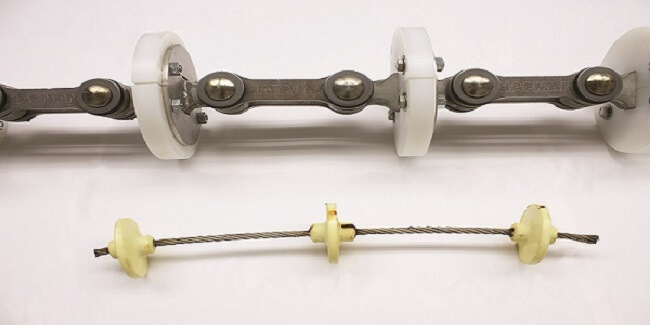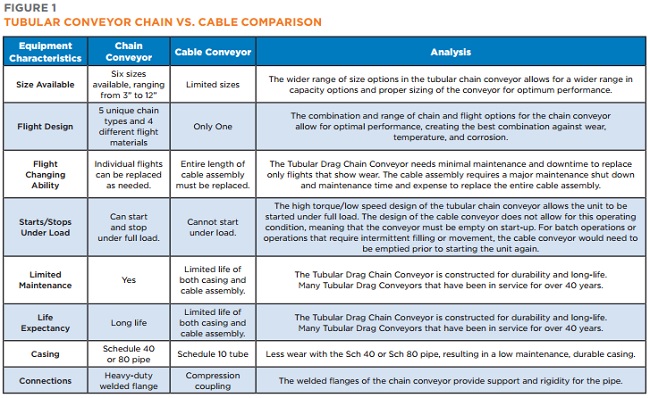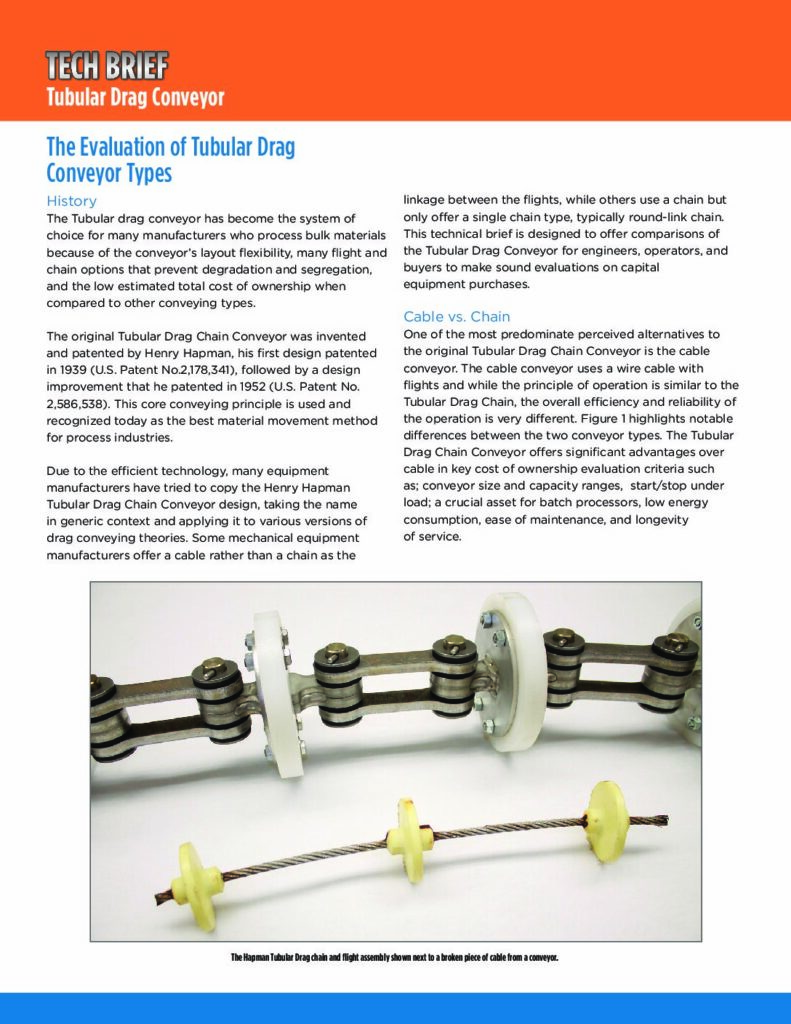
The Tubular drag conveyor has become the system of choice for many manufacturers who process bulk materials because of the conveyor’s layout flexibility, many flight and chain options that prevent degradation and segregation, and the low estimated total cost of ownership when compared to other conveying types.
HISTORY
The Tubular drag conveyor has become the system of choice for many manufacturers who process bulk materials because of the conveyor’s layout flexibility, many flight and chain options that prevent degradation and segregation, and the low estimated total cost of ownership when compared to other conveying types.
The original Tubular Drag Chain Conveyor was invented and patented by Henry Hapman, his first design patented in 1939 (U.S. Patent No.2,178,341), followed by a design improvement that he patented in 1952 (U.S. Patent No. 2,586,538). This core conveying principle is used and recognized today as the best material movement method for process industries.
Due to the efficient technology, many equipment manufacturers have tried to copy the Henry Hapman Tubular Drag Chain Conveyor design, taking the name in generic context and applying it to various versions of drag conveying theories. Some mechanical equipment manufacturers offer a cable rather than a chain as the linkage between the flights, while others use a chain but only offer a single chain type, typically round-link chain. This technical brief is designed to offer comparisons of the Tubular Drag Conveyor for engineers, operators, and buyers to make sound evaluations on capital equipment purchases.
CABLE VS. CHAIN

One of the most predominate perceived alternatives to the original Tubular Drag Chain Conveyor is the cable conveyor. The cable conveyor uses a wire cable with flights and while the principle of operation is similar to the Tubular Drag Chain, the overall efficiency and reliability of the operation is very different. Figure 1 highlights notable differences between the two conveyor types. The Tubular Drag Chain Conveyor offers significant advantages over cable in key cost of ownership evaluation criteria such as;
conveyor size and capacity ranges, start/stop under load; a crucial asset for batch processors, low energy consumption, ease of maintenance, and longevity of service.
 MATERIAL TYPES AND DRAG CONVEYOR SELECTION
MATERIAL TYPES AND DRAG CONVEYOR SELECTION
Bulk density of material is important to accurately determine when sizing any type of conveyor and equally important when evaluating the selection of a cable vs. chain style drag conveyor. In general terms a cable conveyor typically operates best when the bulk density of the conveyed material is < 20 lb/ft3. The lighter materials allow for lower torque and faster operating speeds and will also provide for start-up under a full load. If material is >20 lb/ft3 the typical cable conveyor cannot start under load, causing operating challenges for batch processes. In addition, the higher operating speeds of typical cable conveyors can cause blended materials to separate and can break friable materials easily.
 Conversely, the chain conveyor operates well when conveyed material is in excess of 60 lbs/ft3. The high torque, low speed operation of the Tubular Drag Chain Conveyor provides adequate power to start the conveyor under full load while maintaining required material delivery rates and performing both continuous and batch operations flawlessly. Also, the low operating speed of the Hapman Tubular Drag Chain Conveyor keeps blended materials together even when bulk densities vary widely.
Conversely, the chain conveyor operates well when conveyed material is in excess of 60 lbs/ft3. The high torque, low speed operation of the Tubular Drag Chain Conveyor provides adequate power to start the conveyor under full load while maintaining required material delivery rates and performing both continuous and batch operations flawlessly. Also, the low operating speed of the Hapman Tubular Drag Chain Conveyor keeps blended materials together even when bulk densities vary widely.
There are also notable differences between operating conditions when moving wet or sticky material. Chain systems are ideal for wet and sticky material as the strong, steady, pull resulting from the low torque/low speed of chain-driven systems moves heavy, wet material with little loss. Also, chain design options such as the sealed pin link allow less wet material to lodge in the chain knuckle. Wet materials are more likely to stick on cables and around flights, making cable a poor option.
There are also notable differences between operating conditions when moving wet or sticky material. Chain systems are ideal for wet and sticky material as the strong, steady, pull resulting from the low torque/low speed of chain-driven systems moves heavy, wet material with little loss. Also, chain design options such as the sealed pin link allow less wet material to lodge in the chain knuckle. Wet materials are more likely to stick on cables and around flights, making cable a poor option.

TOTAL COST OF OWNERSHIP
The evaluation of a Tubular Drag Chain Conveyor as a capital equipment purchase is often analyzed in terms of total cost of ownership (TCO). Typical factors that makeup a TCO evaluation include:
- Purchase Price
- Energy/Utility Cost
- Installation Costs
- Service and Training/Operating Labor
- Cost/Availability of Spare Parts
- Ease of Maintenance
- Quality/Rework/Unexpected Downtime
- Cleaning/Sanitation
Typically, a Tubular Drag Chain Conveyor will cost more than a comparably sized cable system. However, when the total-cost-of ownership is performed, there is often no price advantage held by the cable conveying system.
SUMMARY
The term Tubular Drag Conveyor has been used generically by industrial equipment manufacturers; however, the original patented design by Henry Hapman in 1939 established the standard for a chain and flight operated Tubular Drag Conveying System. Cable driven systems do not maintain the same industrial-grade, safe, reliable, lowenergy and maintenance operation of the Tubular Drag Chain Conveyor. Initial purchase price for the Tubular Drag Chain Conveyor is greater than a cable system but when a TCO evaluation is performed processors find the cost difference negligible and the reliability worth the cost of any potential difference.
Hapman has been designing, improving, expanding, and adding features to the Tubular Drag Chain Conveyor system for 70 years. The Hapman technical sales and engineering teams have perfected the application process to know what flight type and layout configuration will work best in each application. The company Performantee® is a true 100% operational guarantee, providing customers with a no-risk commitment for the equipment purchase.
